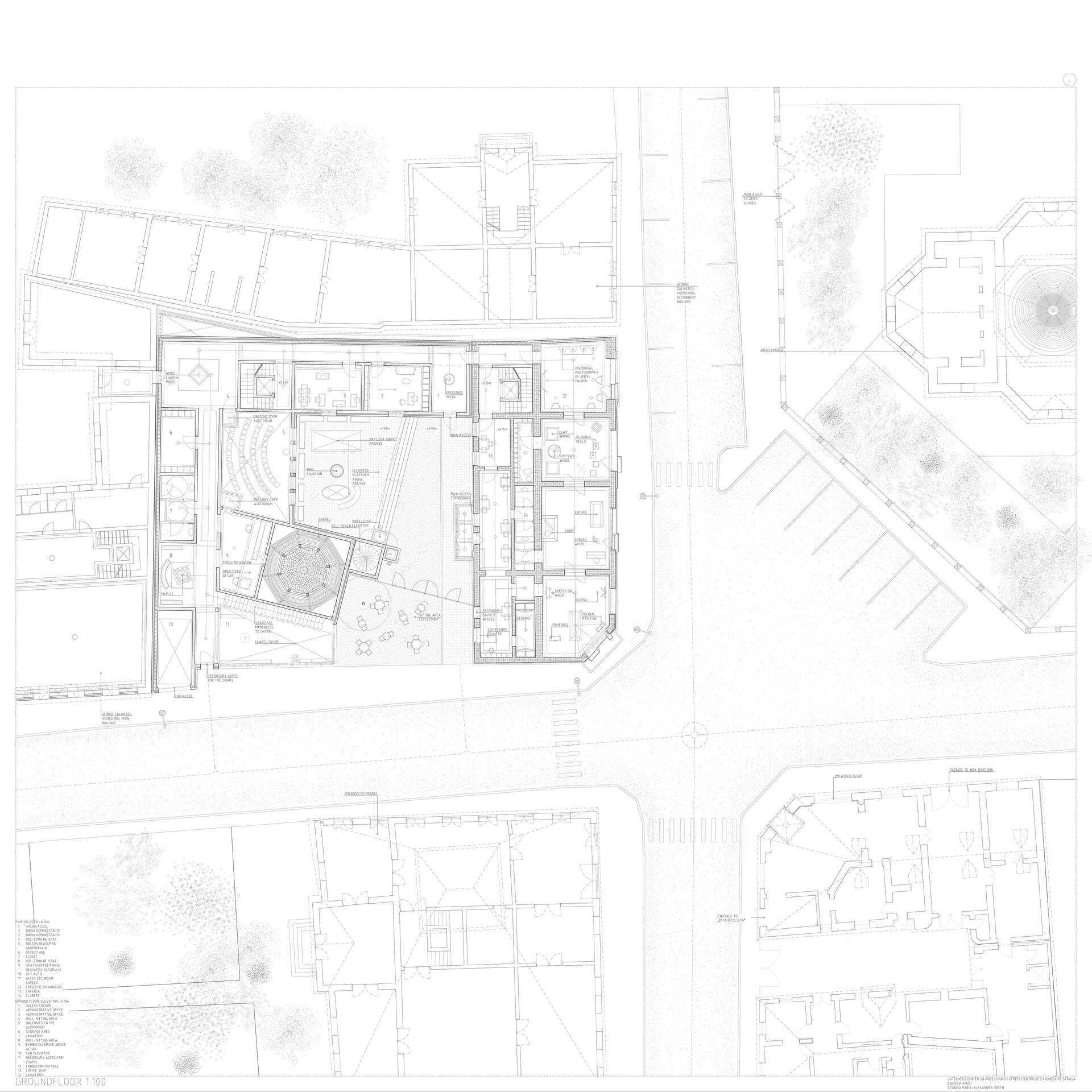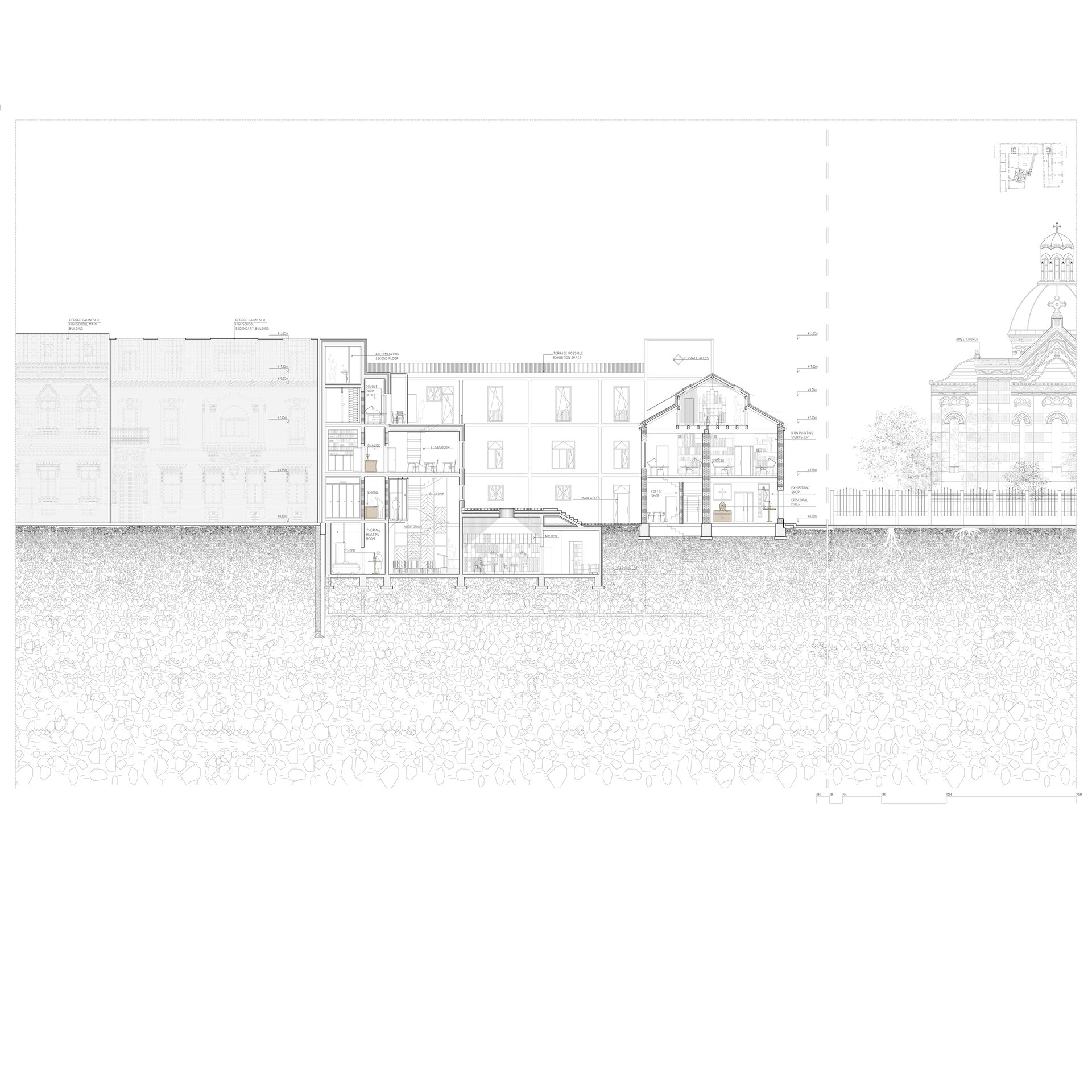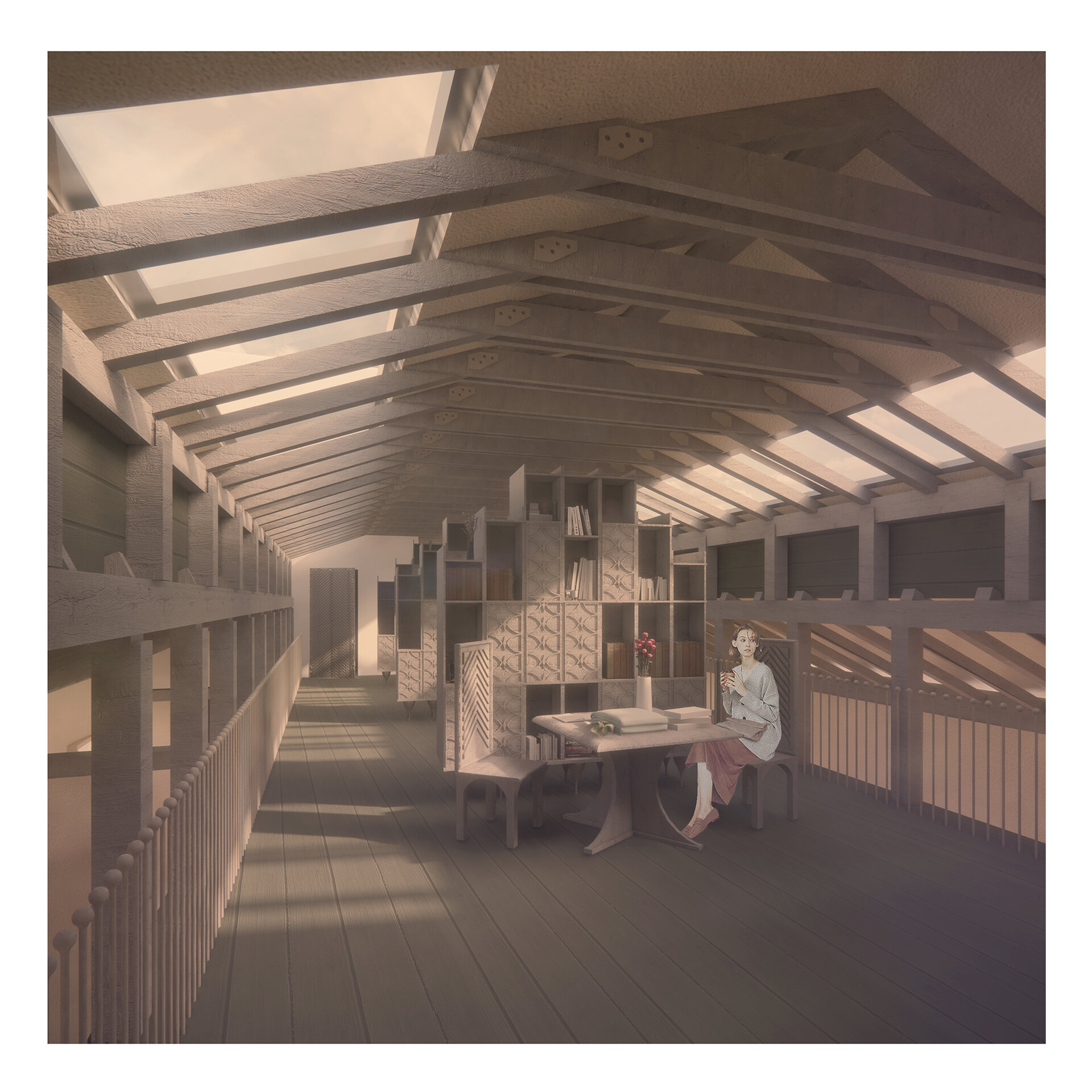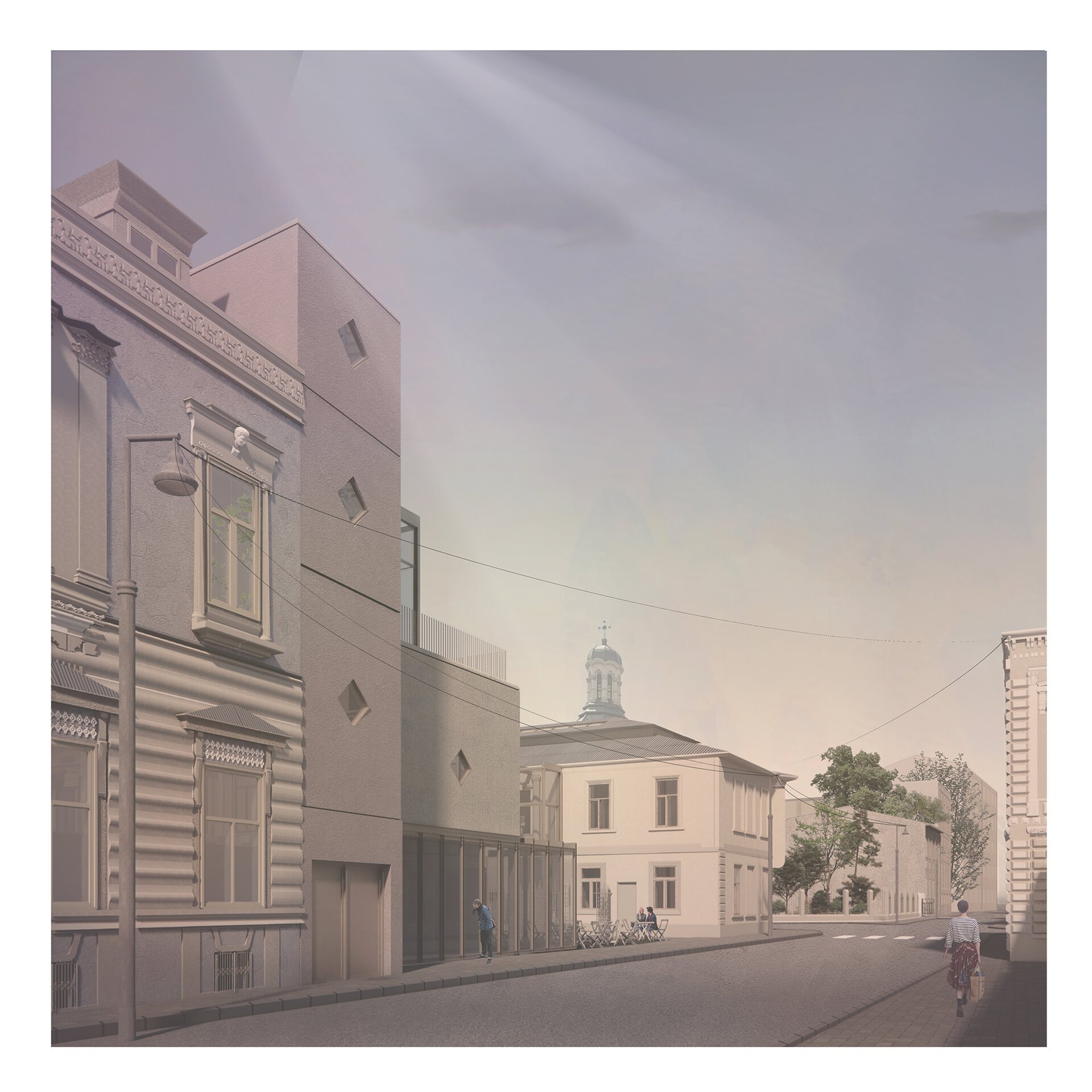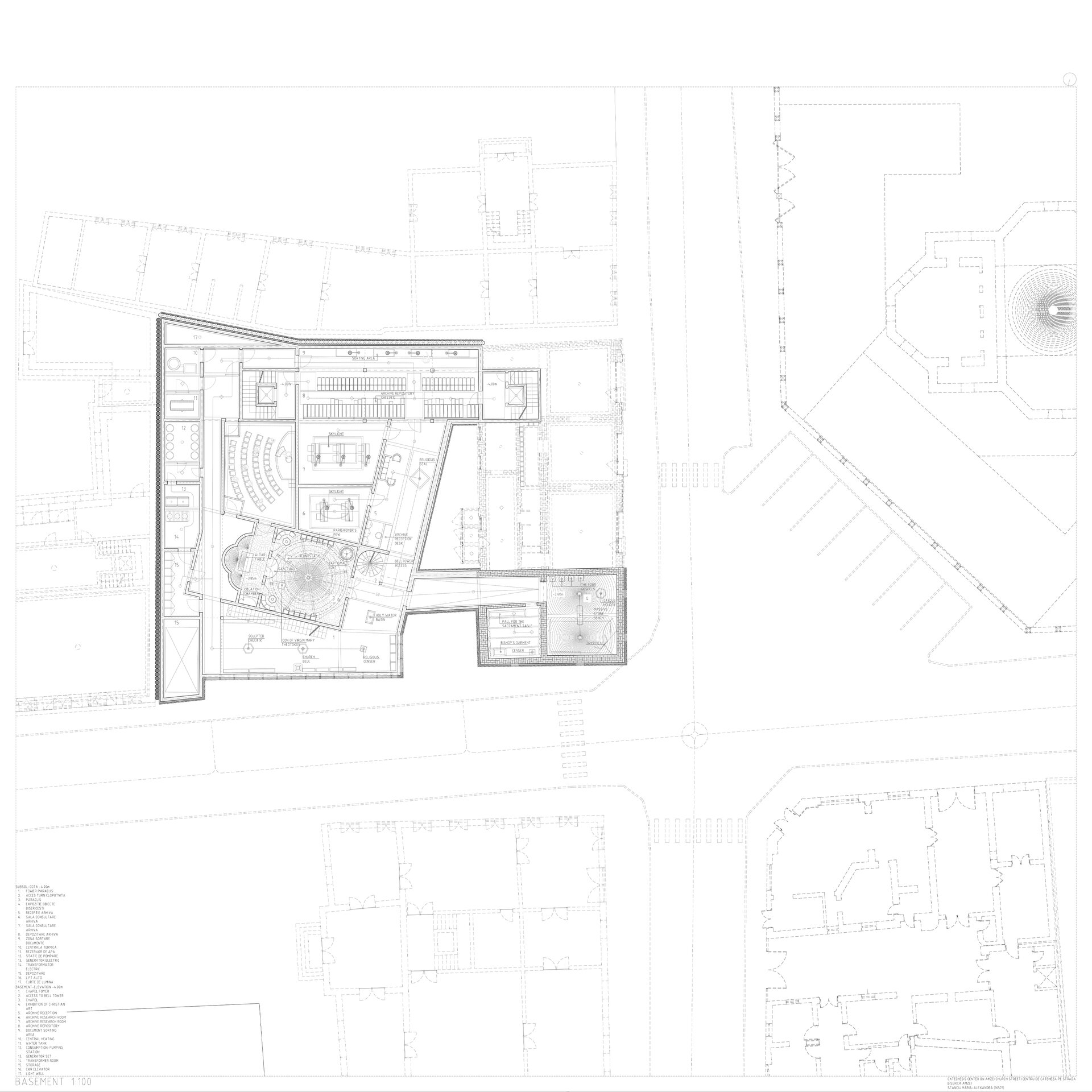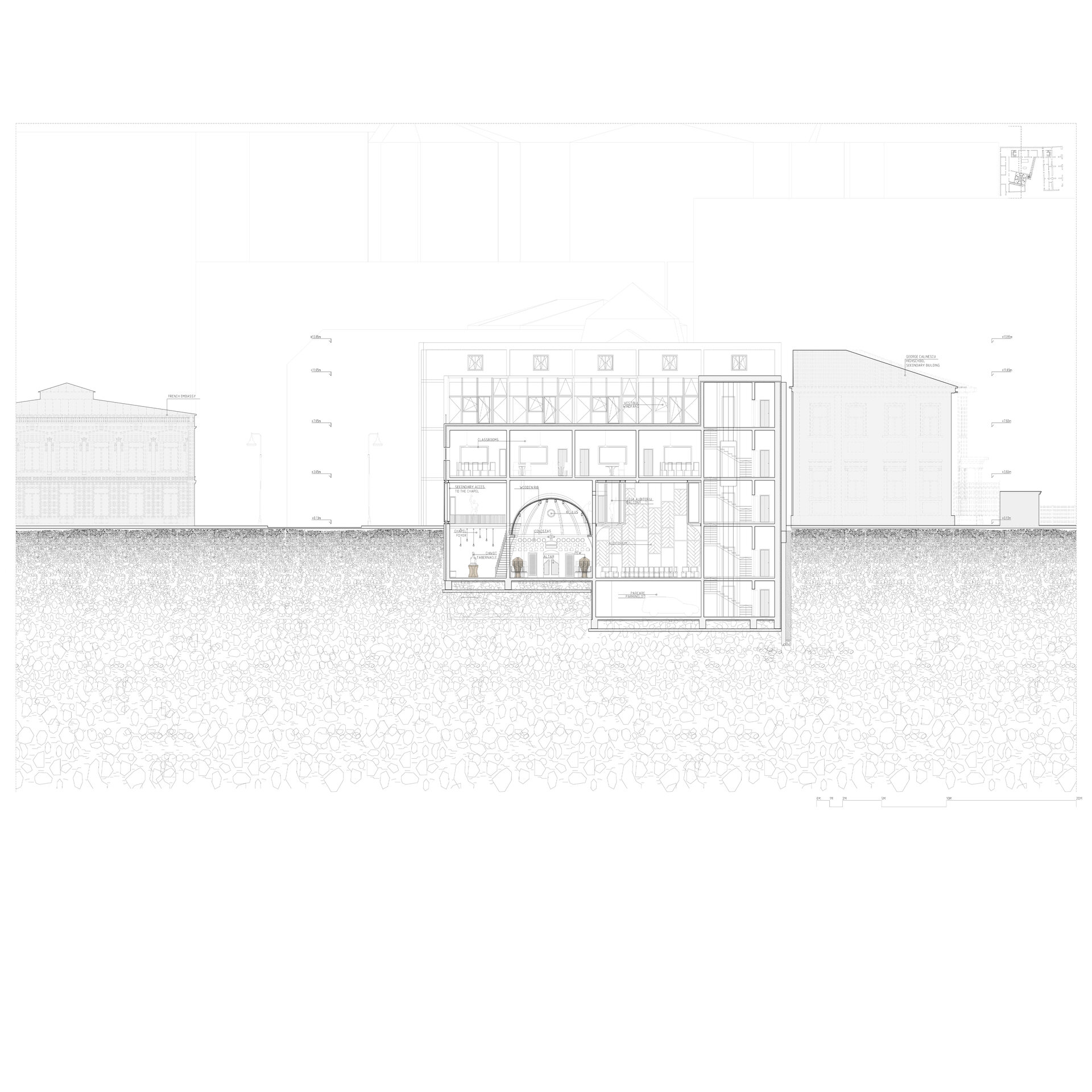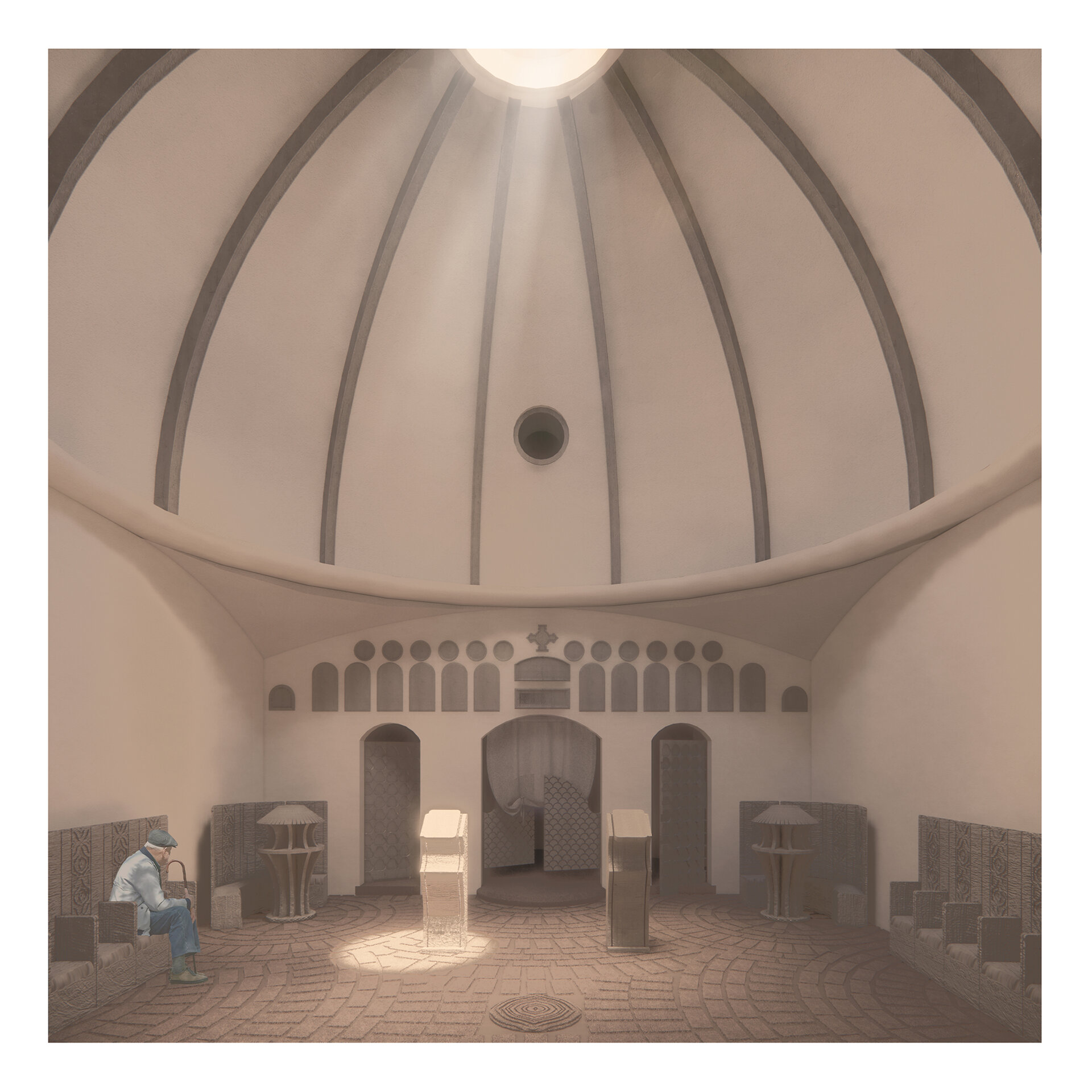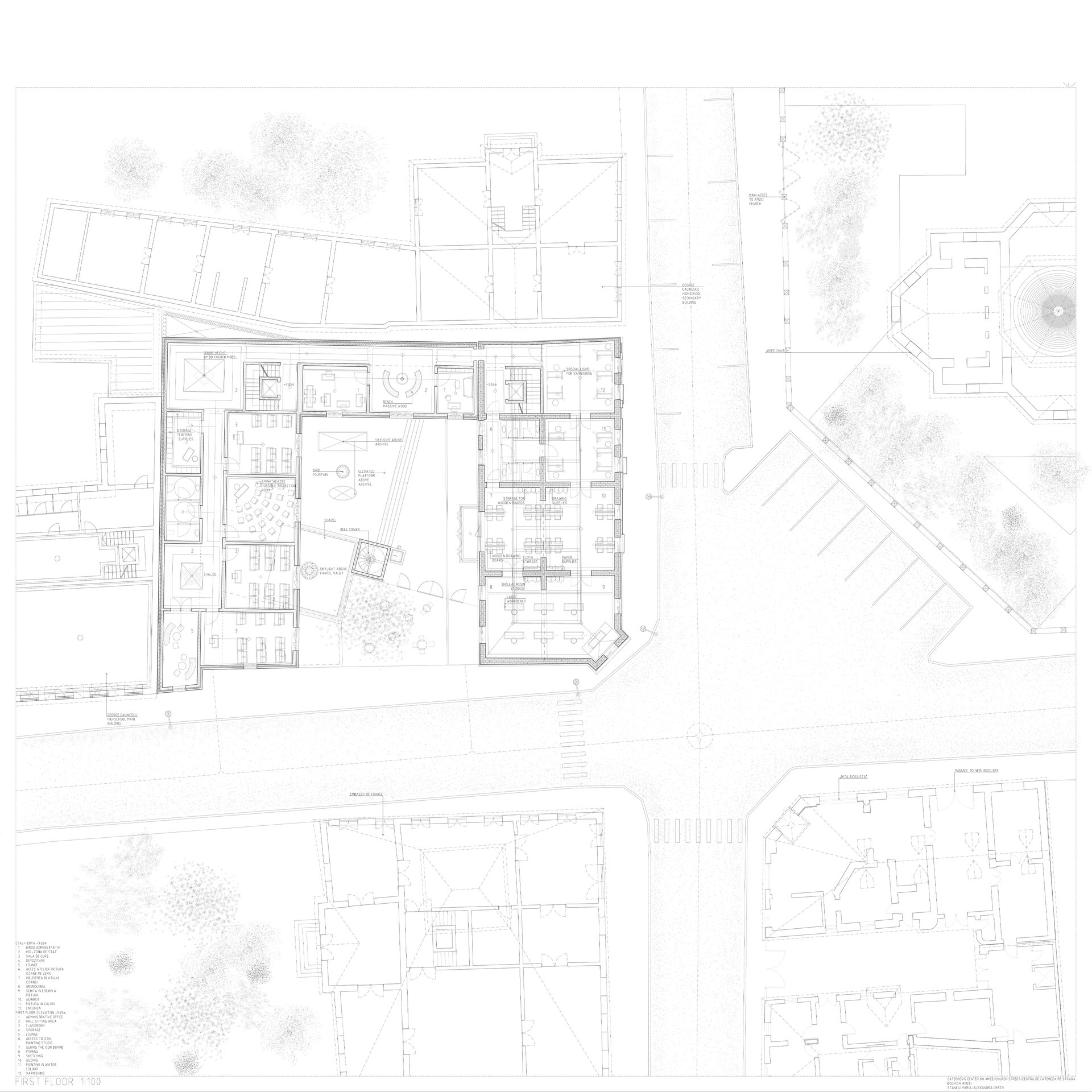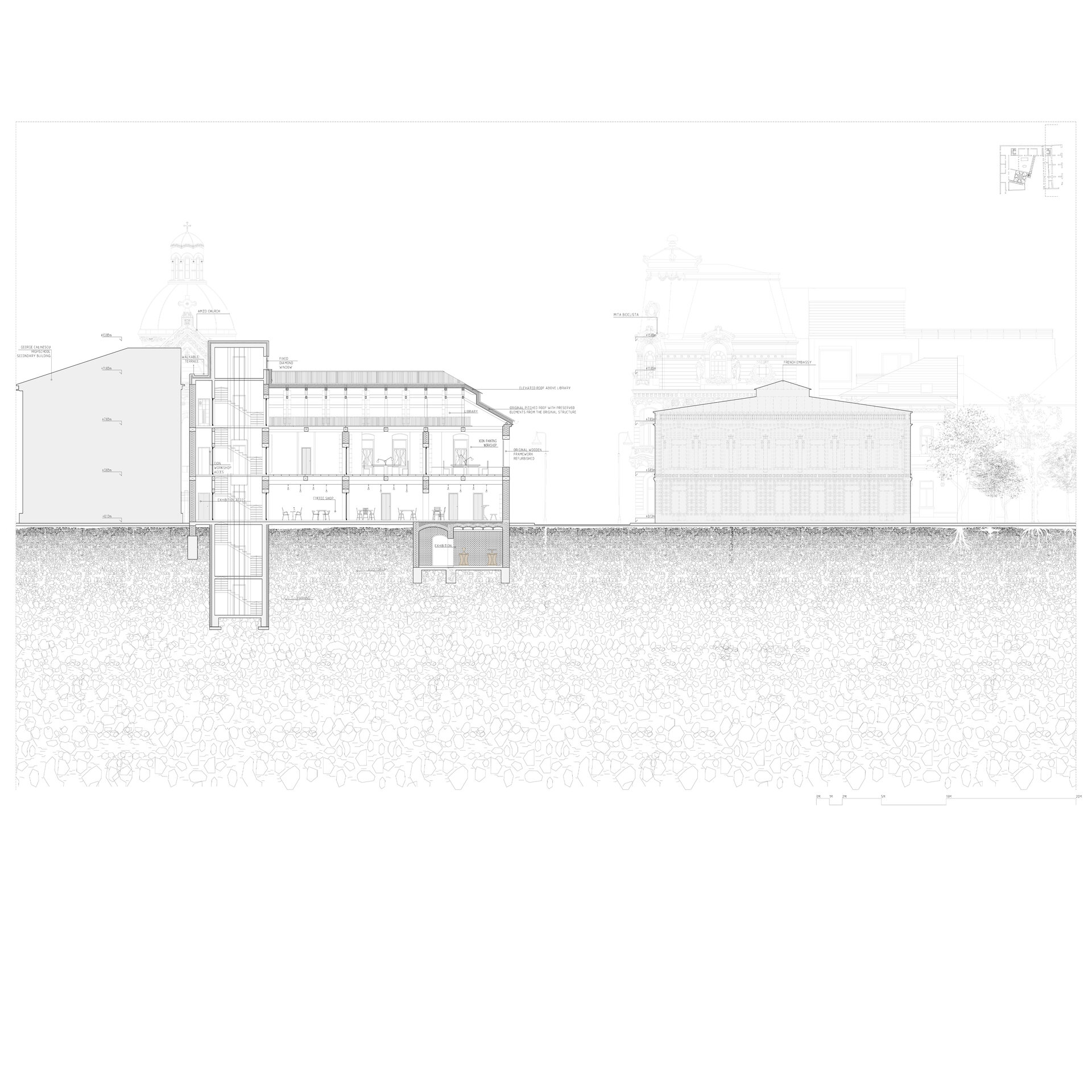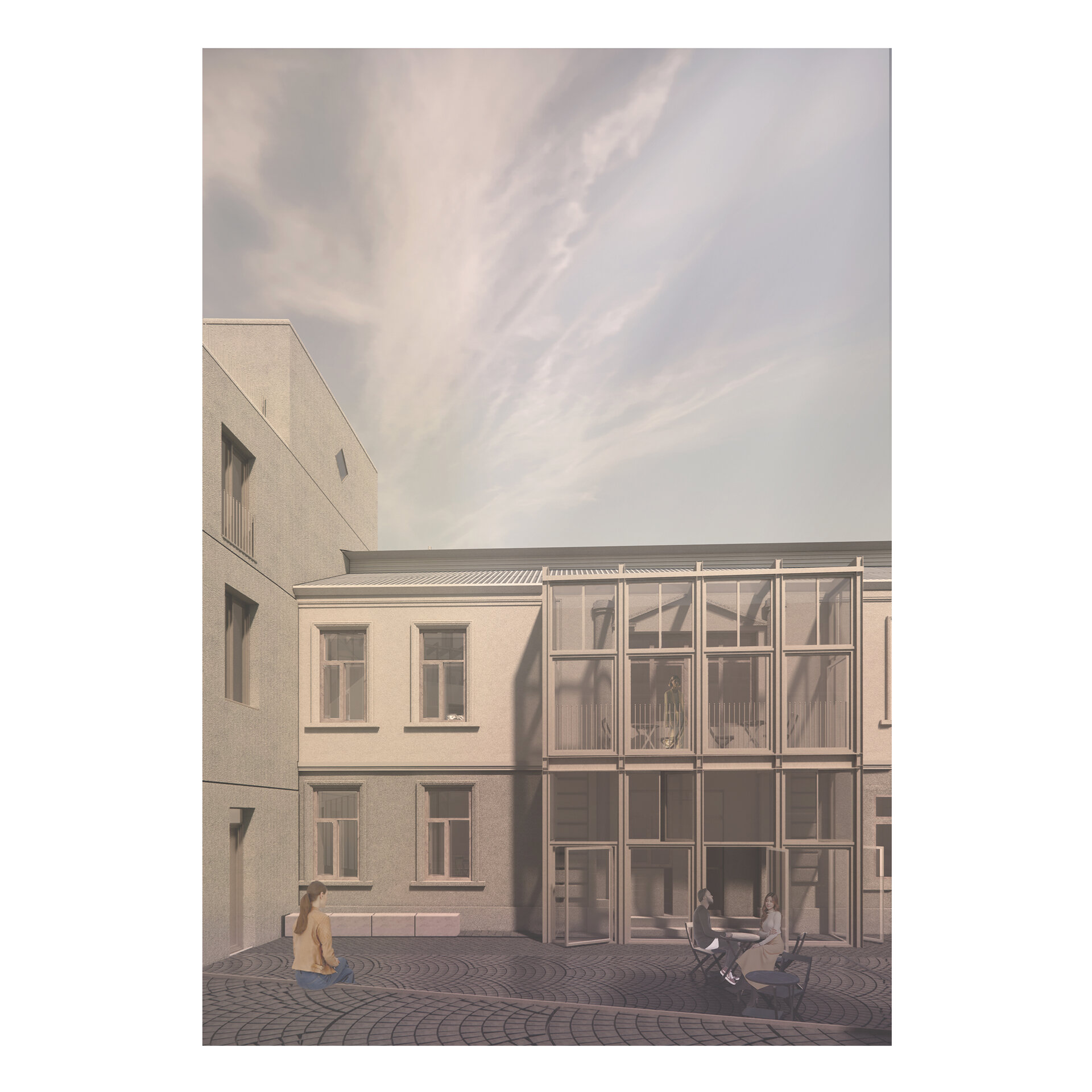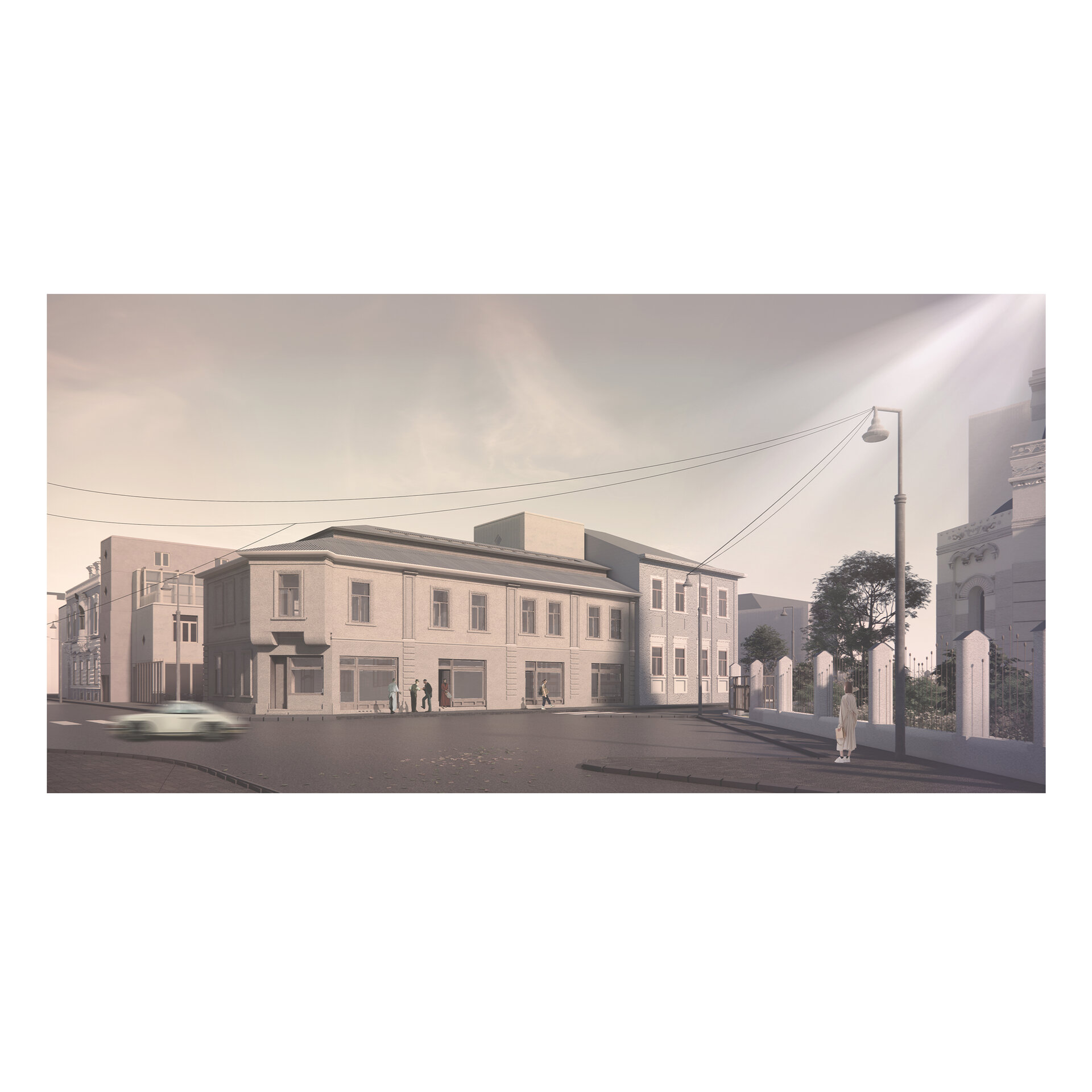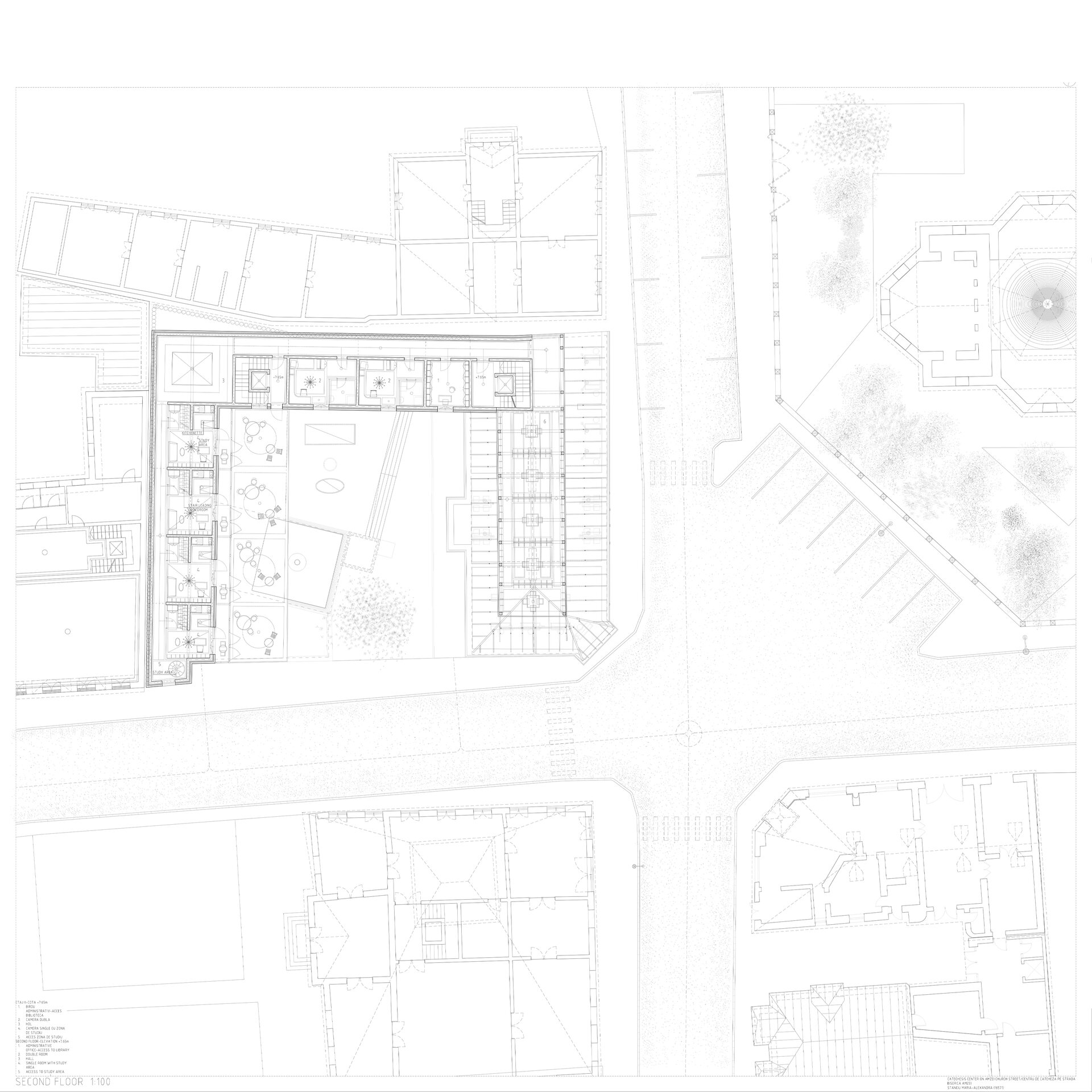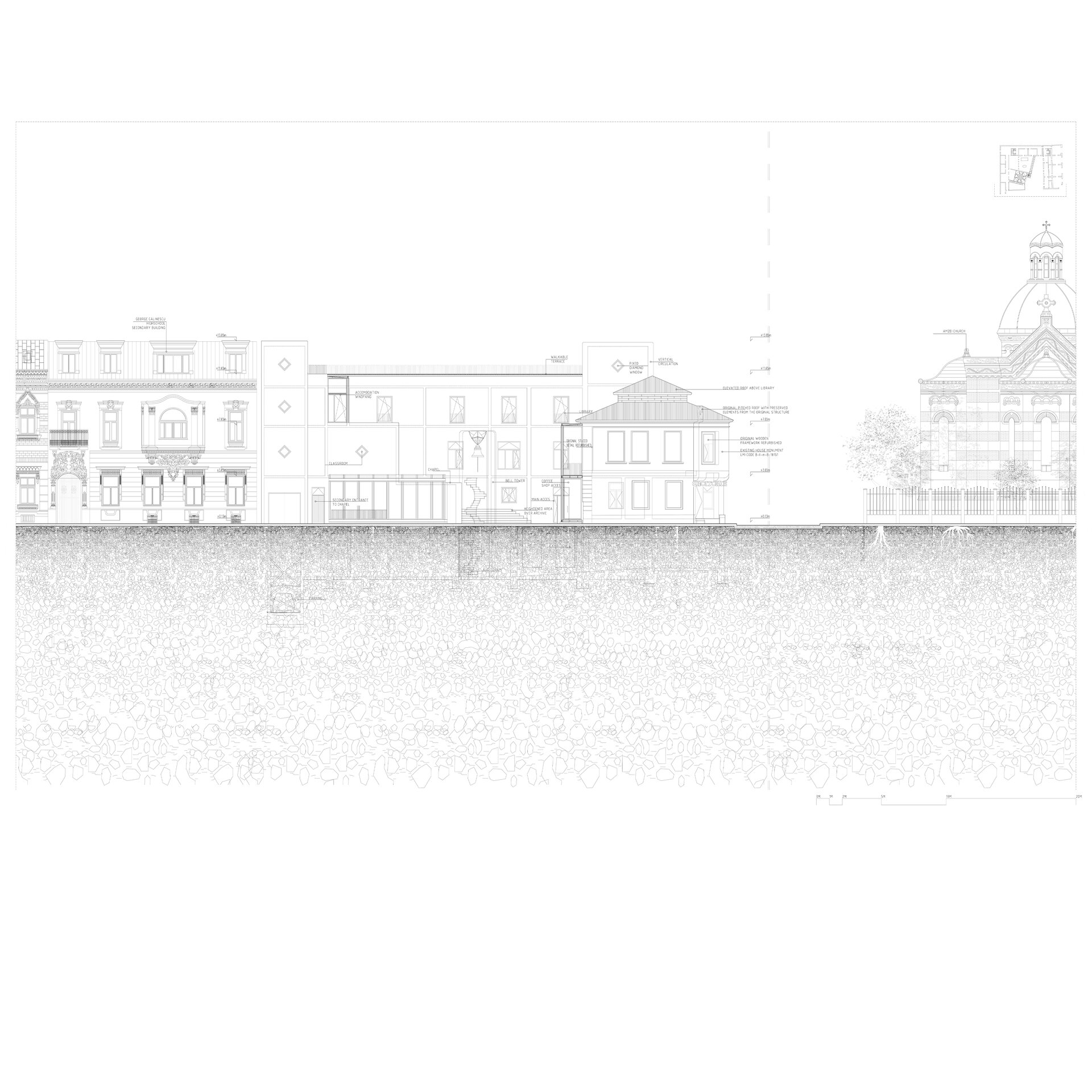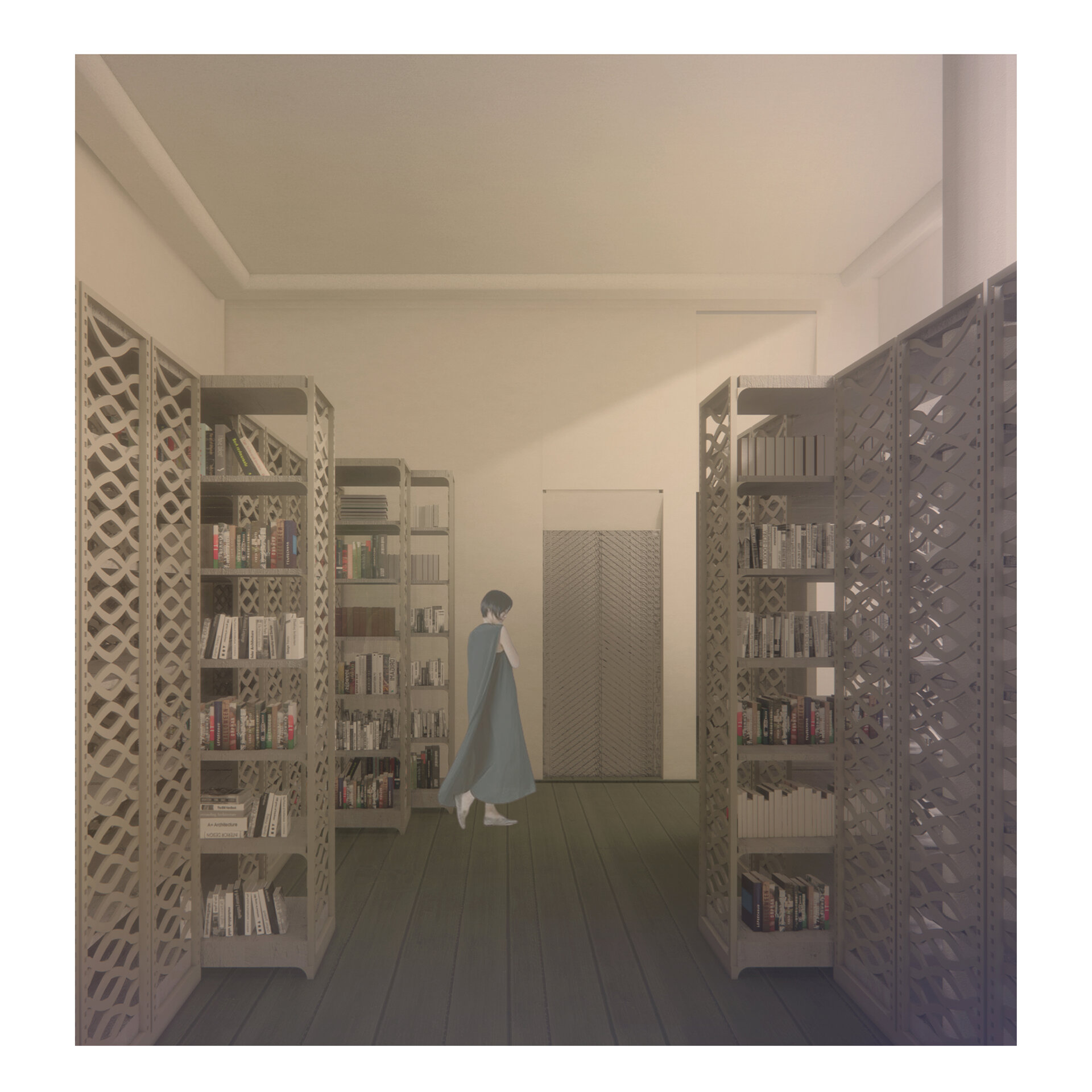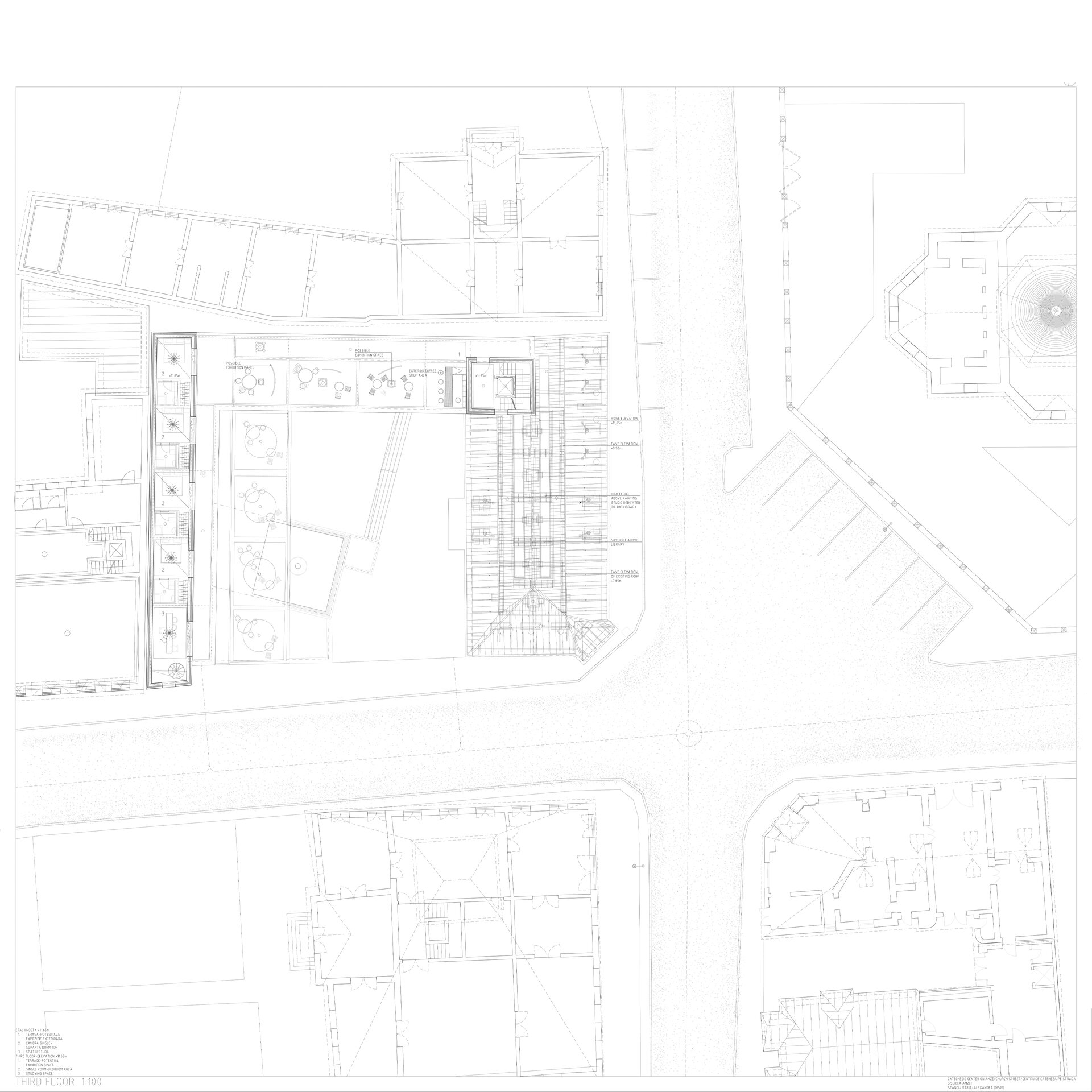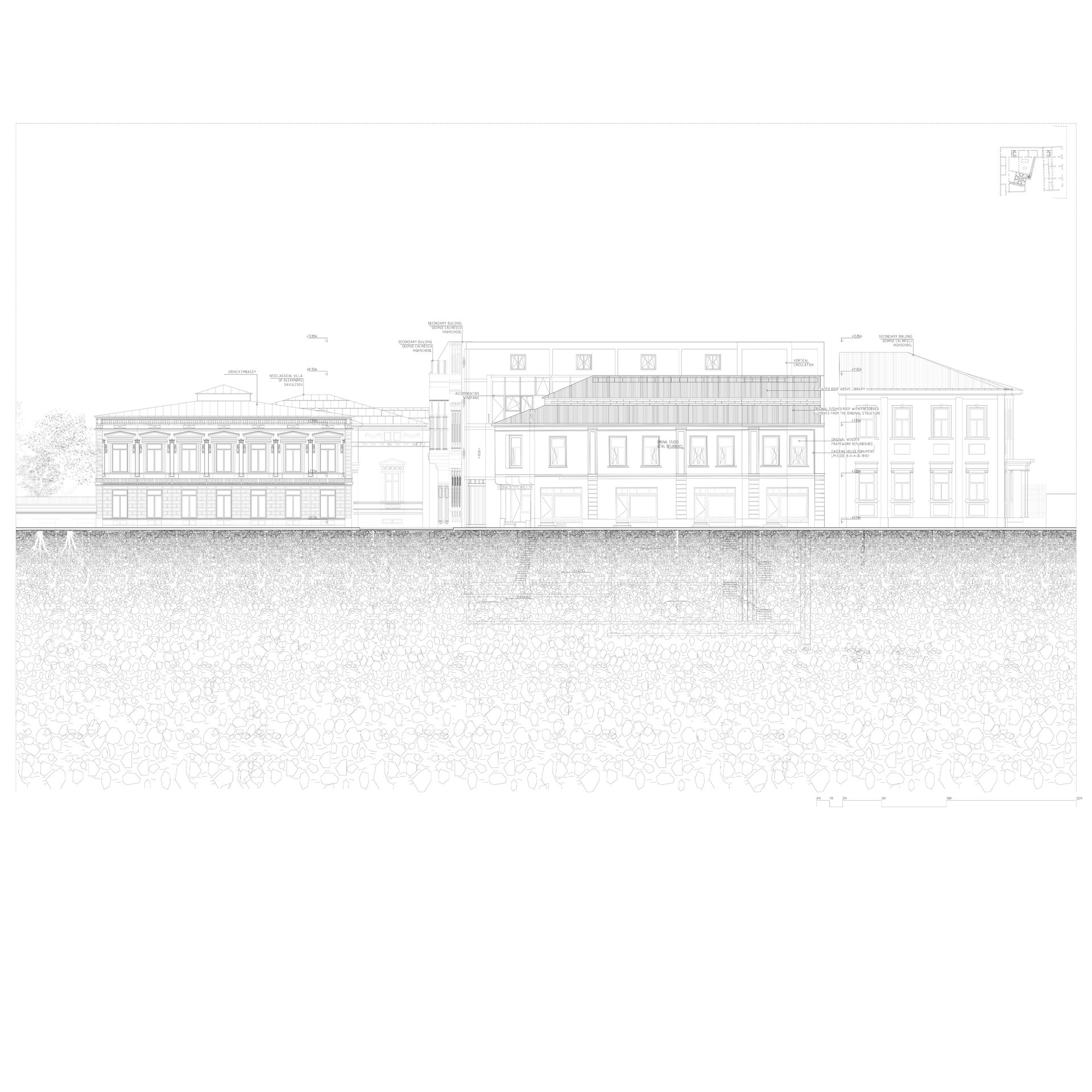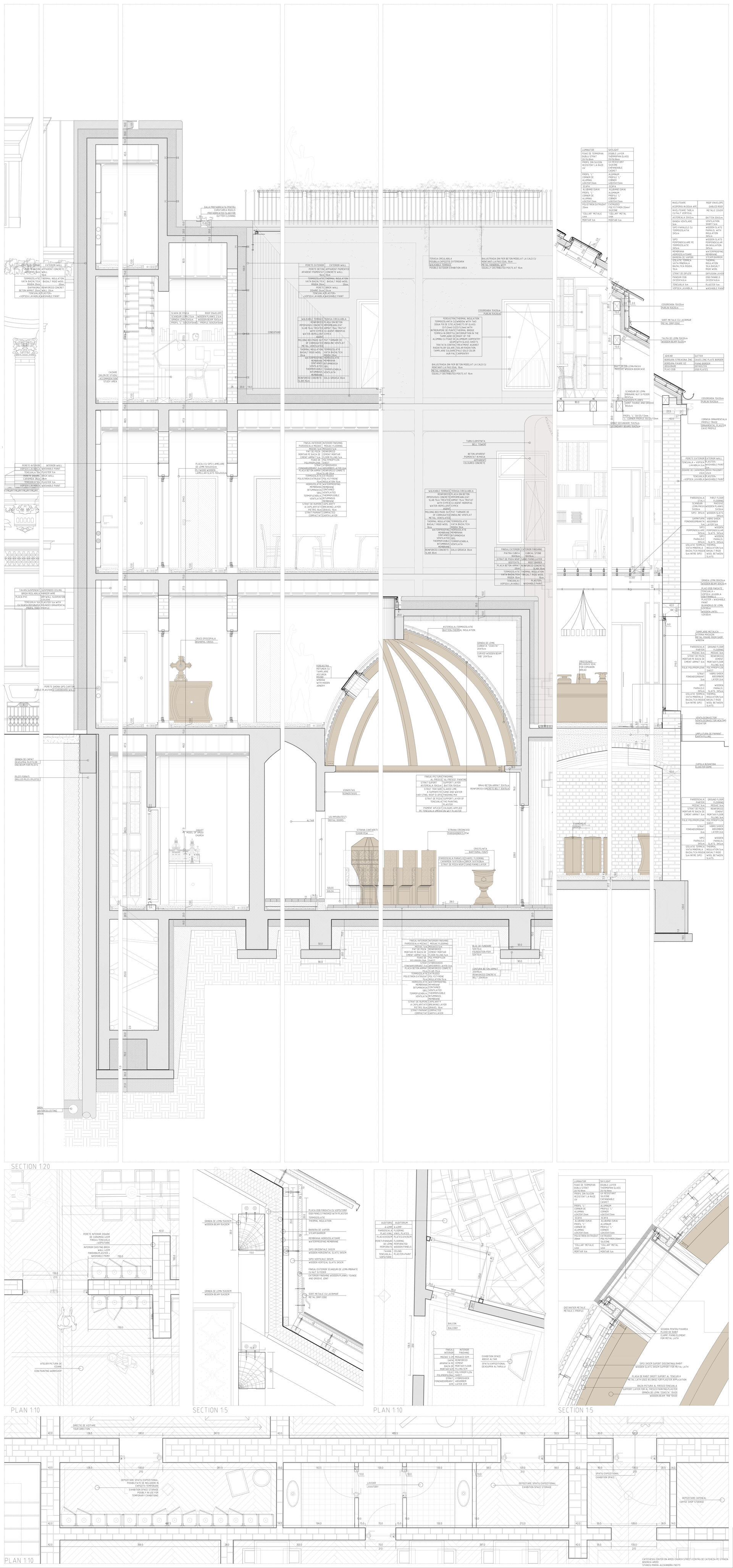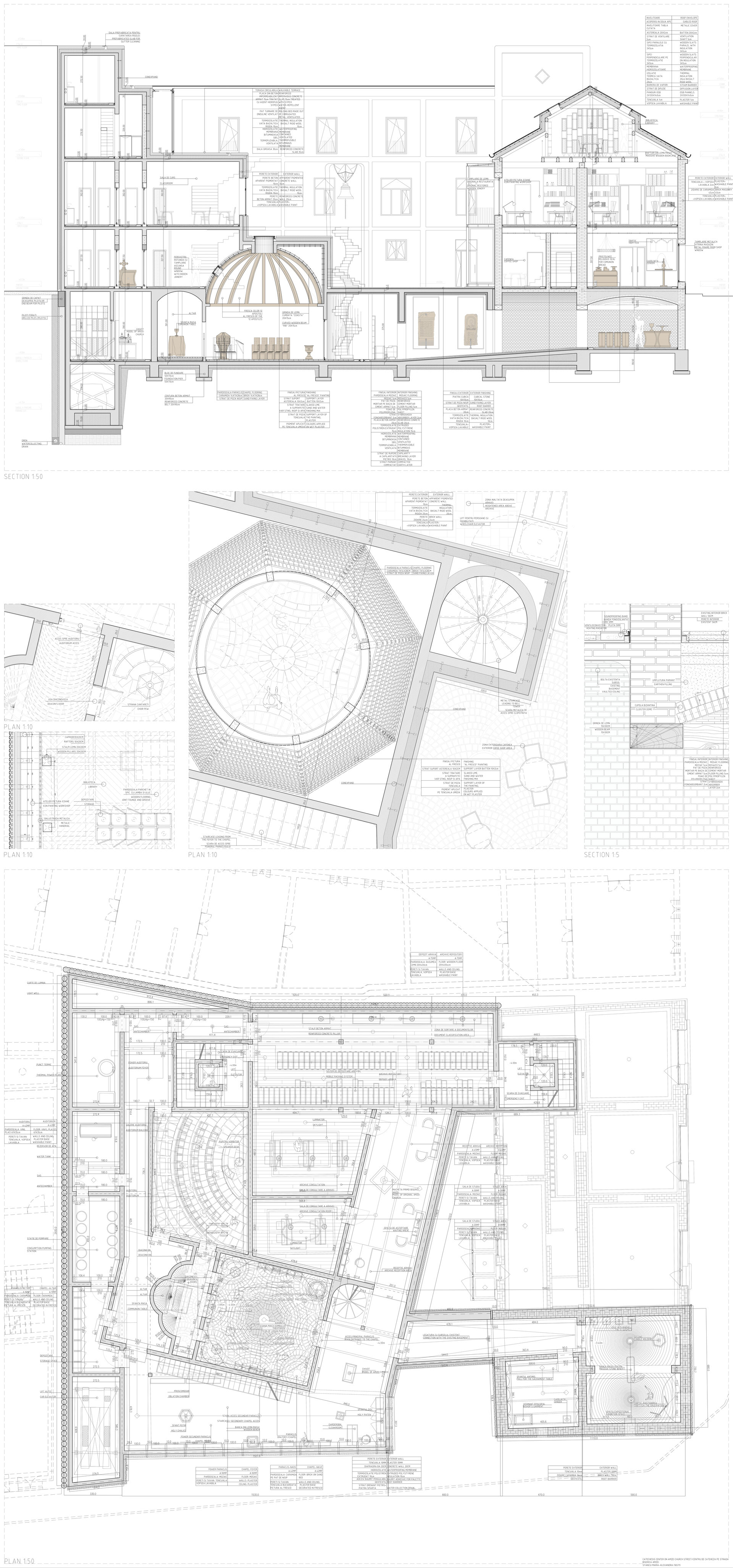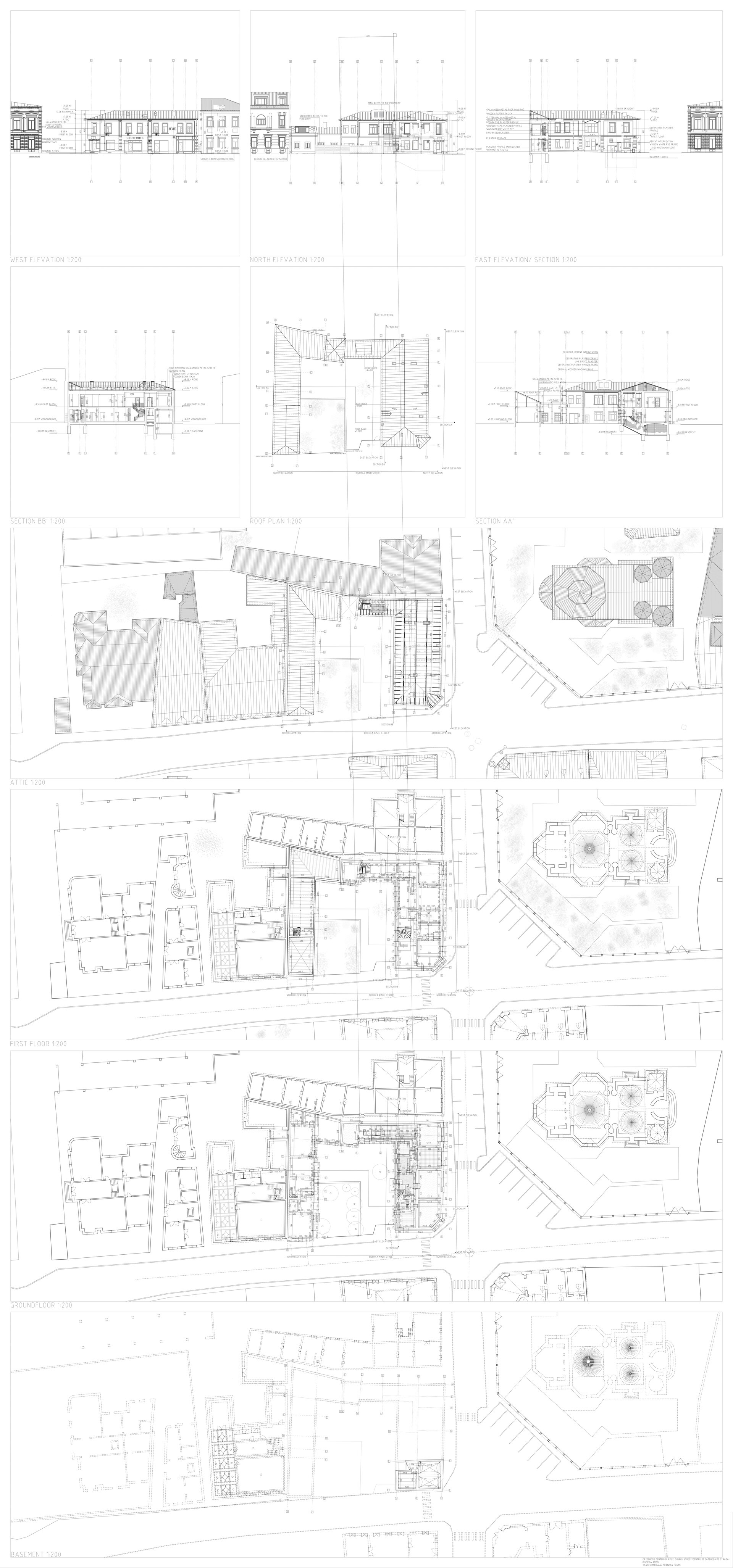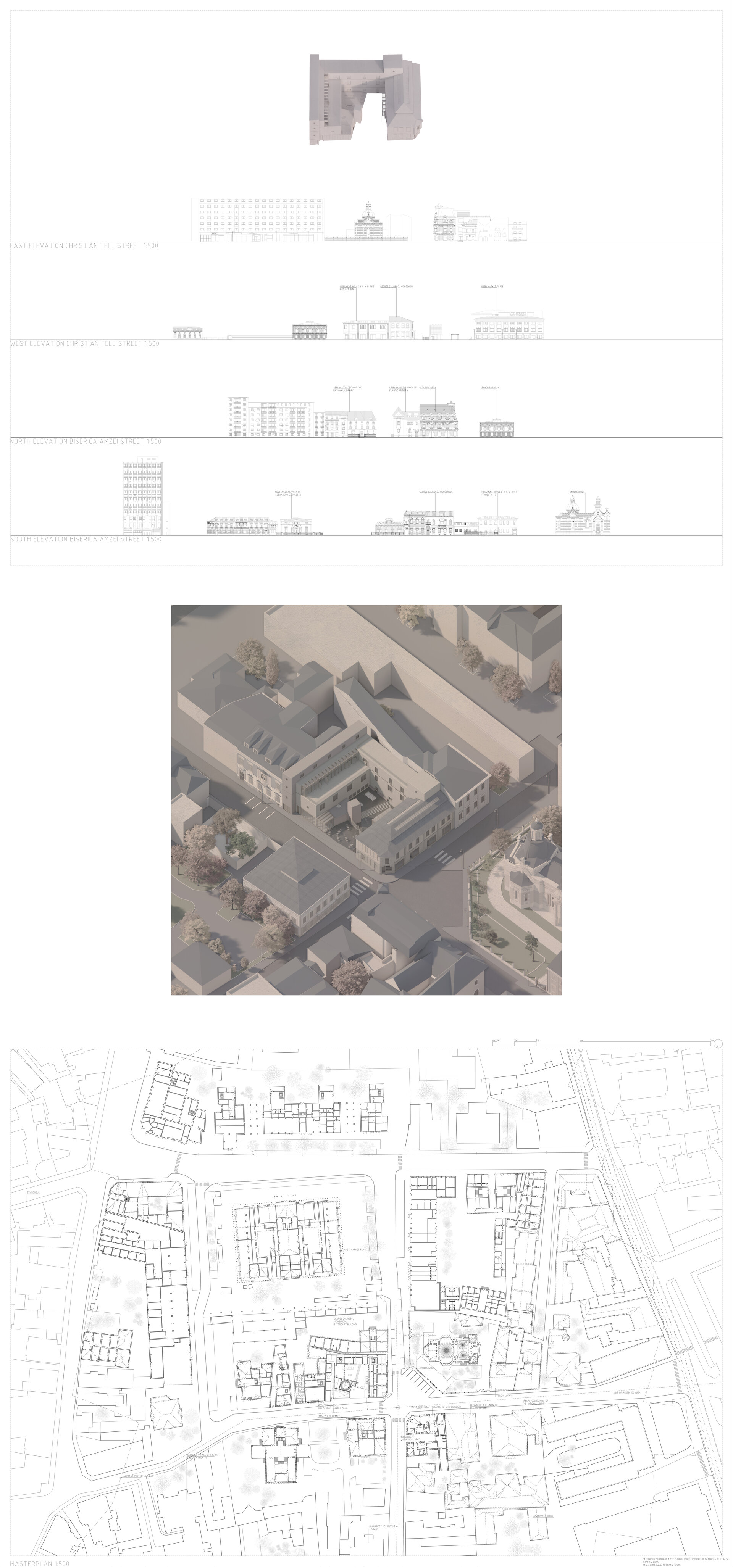
Catechesis center on Biserica Amzei street, Bucharest
Authors’ Comment
The approach to defining and theoretically grounding a catechesis center cannot be
separated from understanding the common landmarks of the place and its inhabitants to whom it
is dedicated. The most acute issue of the subject is, despite the existence since antiquity of
catechetical education forms, the lack of dedicated spaces for them.
Amzei Church has a later origin compared to the neighborhood it serves, being built in
the mid-19th century. Its precursor, Mahalaua Popa Dârvașu, with a longer history than the
current place of worship, suggests through the metonymy between the community and the church
a close connection that has always existed between the two. The proximity denomination is
evident in the case of Bucharest neighborhoods, and the transition from proximity to metonymy
and implicitly to belonging was the natural way of coagulating society in these "primary units of
the city."
The Amzei area has undergone various alterations over time. The church and later the
marketplace have become the permanent catalysts of the community. The dissolution of the
neighborhood due to the city's over-sizing is the current paradigm of Bucharest and is also found
in the vicinity of Amzei. The diploma project proposes as a possible response the return to the
polycentrism offered in the past by the parish cores (which are also currently disrupted by
demographic growth). Common landmarks (on which the community is founded) exist
materially in the area: the school, the market, the shop. What is missing is a space dedicated to
the spiritual landmarks (of any nature) of the community. A catechesis center would be precisely
the formal materialization of the common ethos of the parishioners. Paradoxically, what is
missing from the current community is precisely the present, in its sense of living reality, in
action. This present presupposes Heidegger's Dasein, the fact of being here, in openness. A
catechesis center would become this „space of appearance”(as Hannah Arendt names it). From
the same perspective, the community needs a return to the definition of the future in the
conception of the Romanian villager, as something that can be mastered. As it is seen now, the
future is indefinable and uncontrollable; in the peasant origin of the individual, it included what
must be fulfilled, not just advancing but aspiring towards something (even if that something was
undefined). A revival of all these popular beliefs can, therefore, become the nucleus of
contemporary social fervor and gathers all its attributes in the catechesis space. A catechetical
center focuses on coagulating the community around activities such as workshops, conferences, the study of classical culture (the great books of literature), religious services, and film
screenings. It becomes, therefore, a place of dialogue and encounter.
- Conversion and extension of the former Bourul Factory in Bucharest. Urban Hub for students
- Reimagining the Leonida Garages - Contemporary Cultural Space Bucharest
- Lost Bucharest Museum
- Recovery of Callimachi-Văcărescu ensemble. Cultural and touristic circuit at Mănești, Prahova
- Memorial Museum of Bucharest Pogrom
- ICA - Institute of Cinematographic Arts (in Timisoara)
- Landscape habitat: Extension and conversion of the former imperial baths of Herculane
- Constanța History and Archeology Museum the New Gallery
- Extension of the Independence Cinema with a Film and Media Faculty, Târgoviște
- Agricultural Research Center in Cluj
- City and Community - Youth Community Center on Dacia Boulevard, Bucharest
- “George Coșbuc” Flower Market - Rehabilitation and Expansion
- “Baba Novac” neighborhood center - Rehabilitation of the “Rucăr” commercial complex in Balta Albă, Bucharest
- Medresa, cultural center for Medgidia’s turkish-tatar community. Reintegrating the turkish bath into the urban circuit
- Workspaces for Creative Industries. Christo Gheorgief House
- Day-Care Centre. Nifon Mitropolitul House
- Archaeology Center in the Constanța Peninsula
- Tab. Socio-cultural Incubator. Conversion of the Bucovat Tannery, Dolj
- Community Center, Ferentari
- Art school for children
- Recomposing a lost urbanity. Cultural intervention in the Historical Center of Brăila, Romania
- Factory, School, Campus. Vocational School on the Abandoned Drajna Timber Factory Site, Măneciu County
- Interactive music center
- Catechesis center on Biserica Amzei street, Bucharest
- Center of creation and contemporary culture
- Cultural center - Extension of the “Radu Stanca” National Theater in Sibiu
- Bolta Florești - Community Ensemble
- Digital Fabrication Laboratories. Adaptive reuse of the “Ciocanul” Trade School, Bucharest
- The conversion of the chapel within the former noble estate of the Csávossy family, Bobda
- The house with ogives
- Cultural Forum in Brăila
- Sportul Studențesc Palaestra
- Forest of Arts - Cultural Center & Artist Residencies Timișoara
- Transformation and durability: Red Sand Fort, intervention in the Thames Estuary
- Danube waterfront reimagined. Restoration and conversion of the former shipyard of Drobeta-Turnu Severin, RO
- Revitalization of the Neculescu Inn
- Creative and Research Hub “Unfinished Section Studio”
- Vocational School in Brasov
- Extension of the Pomiculture Research and Development Centre in Băneasa, Bucharest
- Arts and Science Park, Splaiul Unirii Bd.162, Bucharest
- Behind the apartment blocks. Urban reweaving. The Theodor Sperantia Neighbourhood
- The House of the Romanian Academy - From Object to urban fabric
- Chisinau Museum of Modern and Contemporary Art
